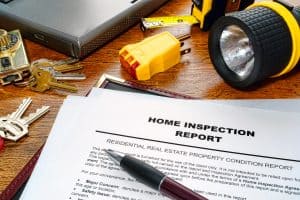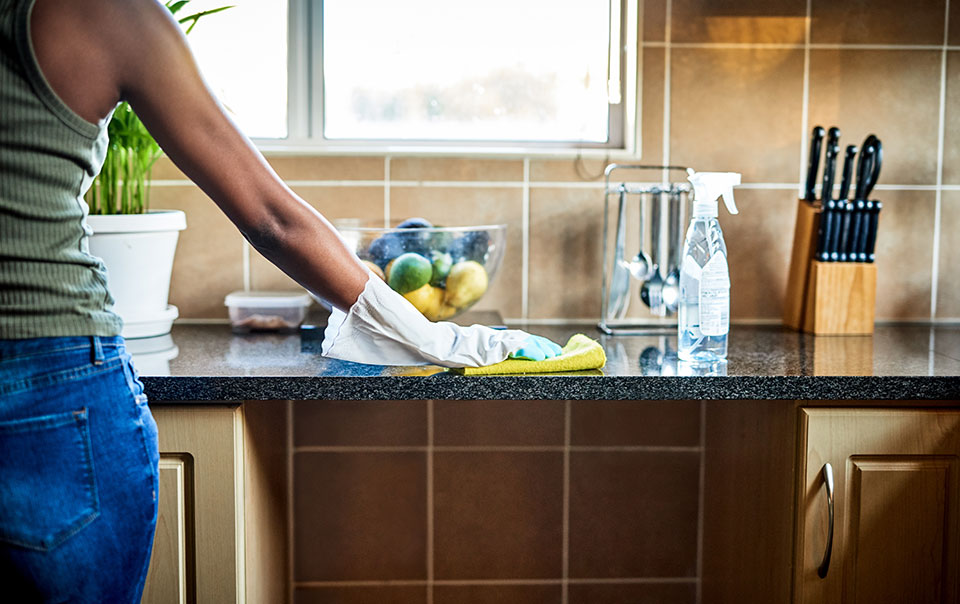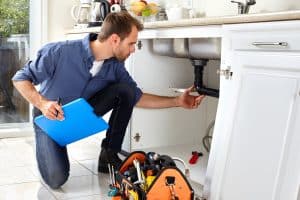
11 Jan Taking Care of Your New Home! Seasonal Home Maintenance Checklists…
 Well you have your dream home! Now comes the TLC part of the journey. In order to maintain a good, well-functioning home, and to maintain the value of your asset. there are a number of things that you need to do periodically. This can be per use, weekly, monthly or annually… but it is important to keep on tract to avoid unnecessary costs and optimize your homes value. You can do these things yourself in many cases or you can hire someone to do the more challenging items (e.g. house painting, gutter, chimney repair etc.). That is up to you to determine.
Well you have your dream home! Now comes the TLC part of the journey. In order to maintain a good, well-functioning home, and to maintain the value of your asset. there are a number of things that you need to do periodically. This can be per use, weekly, monthly or annually… but it is important to keep on tract to avoid unnecessary costs and optimize your homes value. You can do these things yourself in many cases or you can hire someone to do the more challenging items (e.g. house painting, gutter, chimney repair etc.). That is up to you to determine. When you bought your home, you probably had a home inspection done. That’s a good document to keep around since it could provide a road map to some of the more pressing maintenance needs. If you don’t have one, you should consider having one done, particularly if your home is more than ten years old. That’s simply a recommendation, particularly if you are not a person who is “handy” when it comes to understanding your various systems and how to maintain them. Home inspectors can also be a good resource when it comes to finding people to handle the bigger projects.
When you bought your home, you probably had a home inspection done. That’s a good document to keep around since it could provide a road map to some of the more pressing maintenance needs. If you don’t have one, you should consider having one done, particularly if your home is more than ten years old. That’s simply a recommendation, particularly if you are not a person who is “handy” when it comes to understanding your various systems and how to maintain them. Home inspectors can also be a good resource when it comes to finding people to handle the bigger projects.Ten Easy Things to do Regarding Home Maintenance

Homeownership is a major responsibility and keeping up with the many tasks for maintaining your home can be challenging. But often, proactive attention to some key areas around your home can help you avoid costly repairs. To help you keep on top of some common tasks, here’s a home maintenance checklist of things to do each month:
1. Check Fire and Security Devices and Get Provisions
Take precautions to make sure your home is safe and that you have supplies on hand in case there’s a storm or other event that leads to a power outage. Test your security system to make sure that it’s properly functioning. Test and replace batteries in smoke and carbon monoxide detectors and check the expiration date on your fire extinguishers to confirm they’re ready in the event of an emergency.
2. Keep Up With Your Landscaping
In addition to weekly lawn care, aim to tend to your flower beds at least once per month as part of your house maintenance routine in warmer seasons. In some circumstances, letting weeds grow freely, or dead leaves and debris to collect, such as in flower beds, can actually create risk to your property; it can attract pests and even be a fire hazard. Consider spending time each month trimming and maintaining your landscaping to keep things tidy and help keep out unwanted pests.
3. Maintain Your Kitchen and Appliances
For many people, the kitchen is the space in a home where people spend the most time. Spilled foods and liquids associated with cooking, prepping and serving meals could eventually do damage to your floors and countertops. Each month, take time to wipe down cabinets and clear expired items from your pantry. Clean your dishwasher according to the manufacturer’s recommendations to help prevent clogs or leaks, and replace water filters in your refrigerator as needed. If your refrigerator has an ice machine or water dispenser, check the hose between the wall and the refrigerator to determine if it is pinched or stressed. Also look for signs of leaking or wear and tear.
4. Clean Humid Areas
Showers, bathrooms and other areas of the home that can become damp may get mold or mildew, particularly if you don’t have appropriate ventilation. To help avoid mold or mildew buildup, scrub bathroom tile and grout with your preferred cleaning product at least once per month. Make sure to follow product instructions and have adequate ventilation when cleaning. Inspect the fixtures and pipes for any signs of leaks, discoloration or other changes that could indicate wear or corrosion. Check caulking around showers, bathtubs, sinks and toilet bases, and make repairs as needed.
5. Inspect Major Home Systems
Even if you don’t need to clean or service your homes largest systems on a monthly basis, it’s a good idea to check them for potential problems. During the colder months, pay special attention to the maintenance of your HVAC system. Replace dirty filters to help improve indoor air quality and help the heater run more efficiently. When autumn arrives, turn off your outdoor faucets and consider winterizing your water system.
6. Pay Attention to Your Plumbing
Inspecting your plumbing system regularly should be a significant part of your house maintenance. Do a visual inspection and look for signs of damage. These can include things like discoloration on metal pipes; cracking or crimping of plastic, PEX or polymer parts; deposits or rust-like buildup; frayed metal or discoloration on braided supply hoses. If you spot any of these issues, consider proactively replacing the part or calling a professional for assistance. If needed, clean slow-running drains to help prevent a major backup. Make sure toilets aren’t running constantly, as this may cost you more money and waste water.
7.  Check Gutters
Check Gutters
Gutters and downspouts direct rain and melting snow away from your home to help prevent water infiltration. Check your gutters for signs of leaves or other obstructions, and remedy any clogs or improper drainage. Call a professional for help clearing gutters or repairing any damage. This may become particularly important as part of your fall home maintenance when falling leaves can collect in your gutters.
8. Restock Cleaning Supplies
It’s smart to keep a list of home maintenance supplies and check your inventory regularly. When a serious storm is forecast, it can be challenging to find the basic supplies you may need to keep your home clean and your family healthy. Consider stocking up on an appropriate amount of cleaning materials and items like paper products, sponges, cleaning wipes, and liquid or bar soap. Running out of these supplies during a crisis could bring your home maintenance routine to a standstill.
9. Walk Through Your Entire Property
Each month, check any rarely used or seen spaces, such as the attic or under a raised deck. Look for evidence of insects, rodents, rot, leaks or mold to identify developing problems early. If you have large trees on your property, be on the lookout for signs of weakness or decay. You may also want to check your garage door opener to ensure that it’s working properly.
10. Update Your Home Inventory
If you remodel your living space or make significant investments in furnishings or appliances, you’ll want to update your home inventory for insurance purposes. File receipts and take pictures of new purchases and contact your insurance representative to discuss updating your homeowners coverage.
Completing monthly and annual home maintenance tasks is one way to help you avoid costly problems that can occur due to a lack of attention. Your homeowners insurance can help provide coverage against unexpected accidents or other unforeseen events. Contact your local independent agent or Travelers representative to ask about homeowners insurance.
 Go Deeper!
Go Deeper!
So, if you are the type of person that wants/likes to get into the nitty gritty of everything, these check lists can take you there. Below is a description of many important activities. At the end is a link to a printable “Check List” you can use to manage the process. You can add to the list as you go along or as needed. For example, some people have pools others do not. That adds additional maintenance topics and they can differ if it is “in-ground” vs “above-ground”.
In any event we hope you have a fulfilling Home Maintenance” journey!!
Monthly
- Clean or replace HVAC filters.
- Clean the kitchen drain/garbage disposal. – Use a mix of baking soda and vinegar to clean the drain. If you have a disposal, grind up lemon peels, orange peels or ice. This will help to eliminate odors and stuck on foods.
- Inspect each fire extinguisher in your home. Make sure the pin and tamper seal are intact; verify that the pressure reading is still in the proper range, and that there’s no visible damage to any part of the extinguisher.
Spring
- Install a fresh set of batteries in all smoke and carbon monoxide detectors. If you have the new detectors with 10-year batteries, you don’t need to do this.
- Test (and dust) detectors to ensure they’re in good working order.
- Inspect the caulk in your kitchen and bathrooms; re-caulk where needed.
- Vacuum your refrigerator’s coils.
- Schedule an air conditioning inspection (or perform your own inspection). Be sure to clean your AC Condensate drain to prevent clogs.
- Clean the kitchen exhaust hood and air filter to remove grease and prevent fires.
- Inspect your deck. Hammer or screw down any nails that are sticking up. Then, clean and re-seal the wood to extend it’s life (if needed).
- Inspect exterior paint (on house and outbuildings), and do touch-ups as needed.
- Inspect siding/masonry. Make repairs and re-caulk around windows and doors as needed.
- Remove and store storm windows, and install screens. (if applicable)
- Repair or replace damaged window screens.
- Inspect your roof for damage. Look for broken, missing or loose shingles and roof leaks. Also, check the roof on any outbuildings.
- Inspect the attic for signs of leaks or pests.
- Inspect outdoor play equipment for safety issues. Look for loose bolts, broken equipment and active wasp or bee nests. Address any issues found.
- Clean out your gutters.
- Prune shrubs. Spring-flowering shrubs should be pruned after they’ve bloomed. Summer-flowering shrubs should be pruned before they’ve bloomed.
- Schedule your yearly septic tank inspection. (if applicable)
Summer
- Clean the kitchen exhaust hood and air filter to remove grease and prevent fires.
- Vacuum your refrigerator’s coils.
- Reverse your ceiling fans. They should be running counter-clockwise.
- Inspect your foundation for drainage issues. Look for clogged downspouts, grading problems, etc.
- Inspect the basement and/or crawl space for moisture issues. Address anything you find.
- Inspect inside and outside your home for insect activity. Check for termites, ants, carpenter bees, wasps, etc.)
Fall
- Install a fresh set of batteries in all smoke and carbon monoxide detectors. If you have the new detectors with 10-year batteries, you don’t need to do this.
- Test (and dust) detectors to ensure they’re in good working order.
- Clean the kitchen exhaust hood and air filter to remove grease and prevent fires.
- Drain the sediment from hot water heater. If you have a tankless hot water heater, flush the sediment from the lines, instead.
- Vacuum your refrigerator’s coils.
- Insulate all exposed pipes to improve the efficiency of your home.
- Schedule an annual furnace inspection (or perform the inspection yourself).
- Remove (or cover) window air conditioning units.
- Schedule a chimney inspection and cleaning. (if applicable)
- Remove and store window screens; install storm windows. (if applicable)
- Shut off the outdoor water supply, and store hoses for the season.
- Inspect your roof for damage. Look for broken, missing or loose shingles and roof leaks. Also, check the roof on any outbuildings.
- Clean out your gutters.
- Inspect the caulk around all windows and doors; recaulk as needed
- Trim trees and shrubs to ensure nothing is touching the house.
- Inspect your deck for any nails or screws that have worked there way out. Hammer or screw them back down.
- Clean your outdoor furniture; then, cover or store it for the season.
Winter
- Clean the kitchen exhaust hood and air filter to remove grease and prevent fires.
- Test GFCI outlets in kitchens, bathrooms and laundry room.
- Vacuum your refrigerator’s coils.
- Clean your dryer vent to prevent a dryer fire.
- Check all sinks and toilets for leaks, and make any necessary repairs.
- Inspect the hoses on your washing machine, dishwasher and ice maker for leaks, and replace as needed. Here’s how to replace your washing machine hose.
- Reverse your ceiling fans. They should be running clockwise.
- Test your sump pump to ensure it’s still functioning properly.
As promised, here is a Printable Copy of the Home Maintenance Check List!
HomeMaintenanceChecklist.pdf (myfrugalhome.com)
Team Leader, Missy Adams
If you would like additional information or you are considering purchasing/selling a home in NH or MA, please contact the Top Producing and Award winning…. The Adams Home Team
Sign up for my Mobile App and search anywhere, any time…
Click Here
Missy Adams, Realtor
Keller Williams Realty
20 Trafalgar Square Suite 101
Nashua, NH 03063
Telephone: 603-320-6368 or 603-883-8400 x138
Visit Missy for more information on this or other properties.
Email: missyadamsrealestate@comcast.net
Twitter: @missyadamsnh #AdamsHomeTeam



Sorry, the comment form is closed at this time.